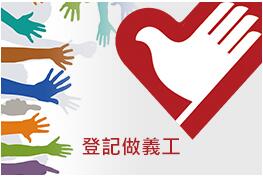About Rare DiseasesRare Disease Wiki

Takayasu Arteritis (TA)
Name of disease:
Takayasu Arteritis (TA)ICD-10 diagnosis code:
M31.4Causes:
Takayasu Arteritis (TA) is a rare form of large vessel vasculitis. The exact cause is unknown. There are studies suggesting that some people may carry a gene for a disease but it may not be expressed unless something in the environment triggers the disease.
Mode of inheritance:
Some studies have suggested that at least some cases of Takayasu arteritis may be inherited as an autosomal recessive genetic trait.
Prevalence
Worldwide: about 2.6 cases per million per year It is observed more frequently in Asian countries and most patients are female. About 100-200 new cases of Takayasu arteritis are registered each year in Japan.
Diagnosis:
A complete medical history Physical examination X-rays Magnetic resonance imaging (MRI) Computerised axial tomography (CAT)
Age of onset:
20–40 years of age Onset in childhood is far less frequent.
Common signs and symptoms:
Blockage of blood vessels associated with limb claudication Diminished or absent pulses Vascular bruits Hypertension Aortic regurgitation Dizziness Temporary vision loss Shortness of breath (dyspnoea) Headaches Chest wall pain
Available treatments (medicinal and non-medicinal):
The commonly used medications include: non-steroidal anti-inflammatory drugs (NSAID), steroid drugs and cytotoxic agents Plasma exchange Lymphocyte replacement Immunoadsorption therapy
Disease management tips:
Get enough rest and keep a regular daily routine and sleep schedule to stay healthy. Try to keep your hands and body warm always, and avoid choosing severely cold areas when traveling abroad, so as to lower the risk of developing Raynaud’s phenomenon or worsening the condition. Avoid taking frozen objects directly with bare hands in daily life. You must wear gloves when cleaning the house, or use warm water for cleaning. Use moisturizers every day to prevent dry skin from cracking, because damaged skin can easily lead to bacterial infections, which will have serious consequences. Upon a relapse, the patient may have poor appetite. In order to maintain a nutritional balance, smaller and more frequent meals are recommended, and picky eating should be avoided. The side effects of long-term use of steroids are weight gain, high blood sugar, high blood pressure, osteoporosis, etc.. Therefore, overeating should be avoided. Low-sugar, low-oil and low-salt diets are preferred. Pay attention to calorie intake, avoid drinking alcohol, and get adequate calcium and vitamin D to prevent osteoporosis. It is recommended that more fruits, vegetables and cereals should be included in the diet. Stop smoking can reduce the chance of relapse. When the condition is stable, the patient should gradually increase the amount of exercise to train and strengthen the muscles and joints. You can consult the physical therapist or medical staff to choose the right exercise. Patients should follow the instructions of the medical staff like taking medicines on time, taking blood samples and having follow-up visits regularly. For any signs of deterioration, the patients should immediately consult medical staff to make appropriate arrangements.
References:
https://www.ncbi.nlm.nih.gov/pmc/articles/PMC1769710 https://www.vasculitis.org.uk/about https://rarediseases.org/rare-diseases/arteritis-takayasu https://www.medscape.com/answers/332378-78641/what-is-the-global-prevalence-of-takayasu-arteritis https://www.hkarf.org/wp-content/uploads/2020/01/Vasculitis_2019.pdf
Other useful websites:
More about the disease: https://wd.vghtpe.gov.tw/cvs/Fpage.action?muid=11031&fid=10440 https://www.mayoclinic.org/diseases-conditions/takayasus-arteritis/symptoms-causes/syc-20351335 Patient groups:https://www.facebook.com/takayasuvasculitis (Facebook page of a patient group in Hong Kong)https://www.vasculitis.org.uk (Vasculitis UK)



